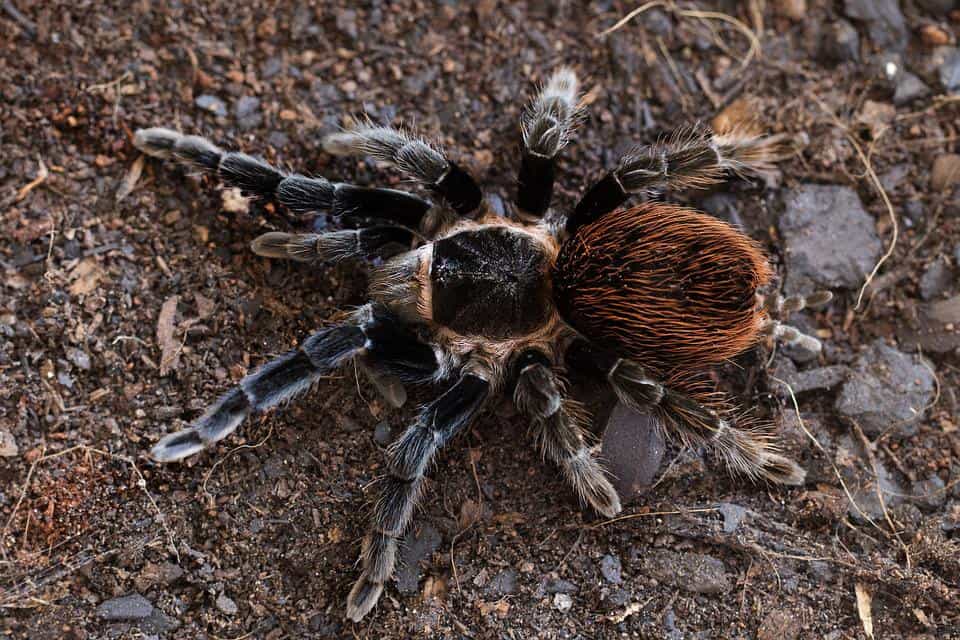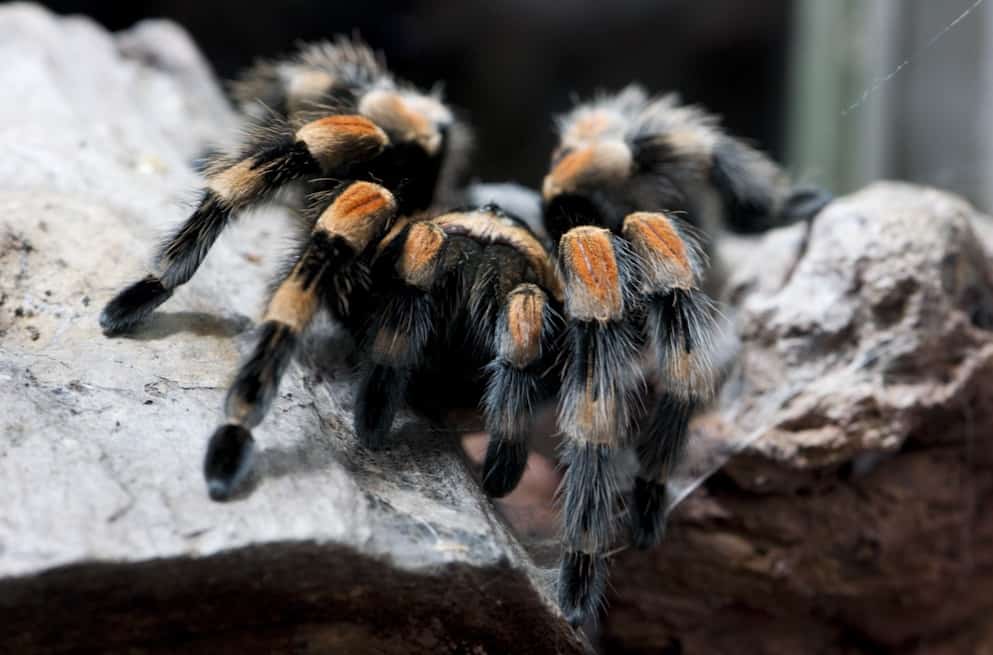Did you know that certain tarantula species can have a longer lifespan than most other animals that people traditionally keep as pets? You might not believe it at first, but certain members of the tarantula family can live for decades. This is quite important information to know if you’re considering getting one as a pet because you have to be aware that you might be making a multi-decade commitment when you’re buying one.
The lifespan of a tarantula depends on a few things. First, it depends on the species. Second, it depends on whether they’re male or female. Females typically live more than 4 times as long as males! And lastly, it depends on the care they receive.
Because their lifespan varies between the species, it’s impossible to give a simple, numerical answer to the question. What we can do is take a look at the different lifespans of a few different species. In addition, we’ll also give some tips to keep your spider alive for as long as possible.

What is the lifespan of a tarantula?
The lifespan for most tarantula species is anywhere between 6 and 30 years for females and between 1 and 10 years for males.
In the tarantula kingdom, Trinidad Olive Tarantulas have some of the shortest lifespans, while Mexican Redlegs have some of the longest.
Why do males live so much shorter than females?
The reason why females live so much longer than males is not entirely clear. It’s easy to say that it’s because the male’s only purpose is to spread its genes and once it’s done that it’s no longer needed, but I believe that’s too short-sighted.
After all, males of many other species do not die any sooner than females. So why are tarantulas so different in that regard?
A recent paper might shine some light on the subject. This paper basically says that males are much more active than females, which leads to more food being burned and more oxygen consumed which leads to more oxidative stress, which eventually leads to their demise.
This seems like a much more plausible explanation than anything else I’ve heard.
Tarantulas with long lifespans

If you’re interested in owning one of these beautiful spiders as a pet and hate saying goodbyes, then getting a species that has a long lifespan is a good idea. Here are 10 tarantula species that can live for incredibly long times.
1. Mexican Redleg
We briefly mentioned them before, but the Mexican Redleg has to be listed here because these spiders are the king of longevity.
Females of this species can live for up to 30 years at most but they commonly reach the age of 25. Males usually live for about 5 to 10 years.
2. Arizona Blonde
The Arizona Blonde is a New World arboreal species with a lifespan of 25 to 30 years for females and 5 to 10 years for males. If you’re looking for a docile spider with beautiful blonde coloration, this is definitely one to consider.
3. Mexican Pink
The Mexican Pink is a stunning spider with gorgeous pink tones. Females have a lifespan of 25 to 30 years, but males unfortunately only live for 4 to 5 years.
4. Mexican Red Knee
Female Mexican Red Knee tarantulas can live for 25 to 30 years whereas males usually only live for less than 10 years.
These spiders are great for beginners because they’re not defensive at all. They almost never bite and are a very friendly species.
5. Brazilian Black Tarantula
Brazilian Blacks are known for their docile temperament and jet-black color. They’re often recommended for people that are new to the hobby, and for good reason.
They have everything a beginner needs, a cool color, docile temperament, and a long lifespan. On average, females of this species can live for 20 years, while males live for 5 to 6 years.
6. Chaco Golden Knee
The Chaco Golden knee has a lifespan of 20 to 25 years for females, while males typically live for 5 to 10 years.
Once again, this is a great species for beginners due to their relaxed temperament. On top of that, they’re also extremely beautiful to look at and make for great show spiders.
7. Brazilian Pink Bloom Tarantula
The Brazilian Pink Bloom Tarantula is an incredibly beautiful spider that has flashy pink and purple colors. Besides being flashy, they can also live for a long time.
Females can typically reach 20 years quite easily, males on the other hand only have a lifespan of 4 to 5 years.
8. Mexican Red Rump
Another Mexican tarantula with a multi-decade-long lifespan (starting to notice a trend here?) is the Mexican Red Rump.
These spiders are incredibly docile and are highly recommended for people as a first tarantula. They have a bright red abdomen, otherwise known as the rump, and black, velvet-like hair on their legs and head, they have a beautiful color that is easy to spot and beautiful to behold.
Females of this species can live for up to 25 years whereas males typically live for up to 5 years.
9. Chilean Rose Hair
The Chilean Rose Hair has a lifespan of up to 20 years for females and 4 to 5 years for males. This is yet another great species for beginners due to the spider’s docile temperament and highly desired colors.
10. Goliath Birdeater
The largest Goliath Birdeater is the largest of all the species and has a matching large lifespan. Female Goliath Birdeaters can reach an age of 25 years, while males can live for up to 6 years.
Old World vs New World Lifespans
If you take a look at the list above and know a thing or two about these arachnids, you might start to notice a pattern: all of the species listed are New World tarantulas!
There are quite a few differences between Old World and New World tarantulas, the most prominent ones are their setae and venom potency.
However, there is one difference between the two types that is sometimes overlooked that might give us some insight into why New World tarantula typically have more longevity, and that is their movement speed.
You see, Old World tarantulas are lightning-fast. They’re so quick that people often say that it looks like they’re teleporting. New World species, on the other hand, are typically slower-moving.
Now, let’s rewind a bit to what we said about the difference in lifespan between females and males. We said that a likely reason that males live shorter is that they’re more active which increases oxidative stress. As such, we can assume that the same applies to Old World species – it’s their higher activity levels that make their lifespan shorter!
Of course, there are exceptions to this rule. Some Old World species, such as the Indian Violet or the King Baboon do have quite a long lifespan of about 20 years. Nevertheless, generally speaking, this rule holds up quite well.
How to maximize your tarantula’s lifespan
In captivity, it’s quite easy for tarantulas to reach their theoretical maximum lifespan. After all, they don’t have to fear any predators and never have to go without food because we keep them well-fed and protected.
There’s not much that can threaten a captive tarantula and they can easily live out their full lifespan if cared for properly. There are only 4 things that can really harm them:
- Spider mites
- Bacterial growth
- Parasites
- Falls
Let’s take a look at how to prevent each of these.
Preventing spider mites & bacterial growth
Preventing spider mites is done the same way as preventing bacterial growth: hygiene.
Make sure that you remove uneaten food in a timely matter and that you replenish their water frequently. You should also spot clean their enclosure. Furthermore, while humidity is important for many species, adequate ventilation should be provided to prevent the growth of mold.
Preventing parasites
To prevent giving parasites to your spider, feed them only home-raised or store-bought insects. Wild-caught crickets, grasshoppers, worms, and roaches can contain parasites that can be transferred to your eight-legged friend.
Preventing falls
Preventing falls is especially important for terrestrial species. Falls can have disastrous consequences because they can lead to them ripping their abdomen which can be fatal.
To prevent falls, make sure that the enclosure you house terrestrial species in is not too tall.
Also, if you choose to handle your spider, make sure to do so very carefully so that you do not drop it.
Final words
It takes many people by surprise because arachnids typically do not live all that long, but tarantulas can have extremely long lifespans. In extreme cases, females can live for up to 40 years, while lifespans of 20 to 30 years are quite common, especially among New World species.
This is great if you want to form a decade-long relationship with your spider, but it is also something that you have to be prepared for when you get one. You really have to be sure in your decision to raise them, because they can be a multi-decade commitment!
- How Long Do American Eskimo Dogs Live? Important Factors and Care Tips - September 29, 2023
- Do American Bulldogs Need Grooming? Essential Tips and Care Guidelines - September 29, 2023
- Do Bengal Cats Enjoy Playing? Essential Tips for Keeping Them Active - September 29, 2023